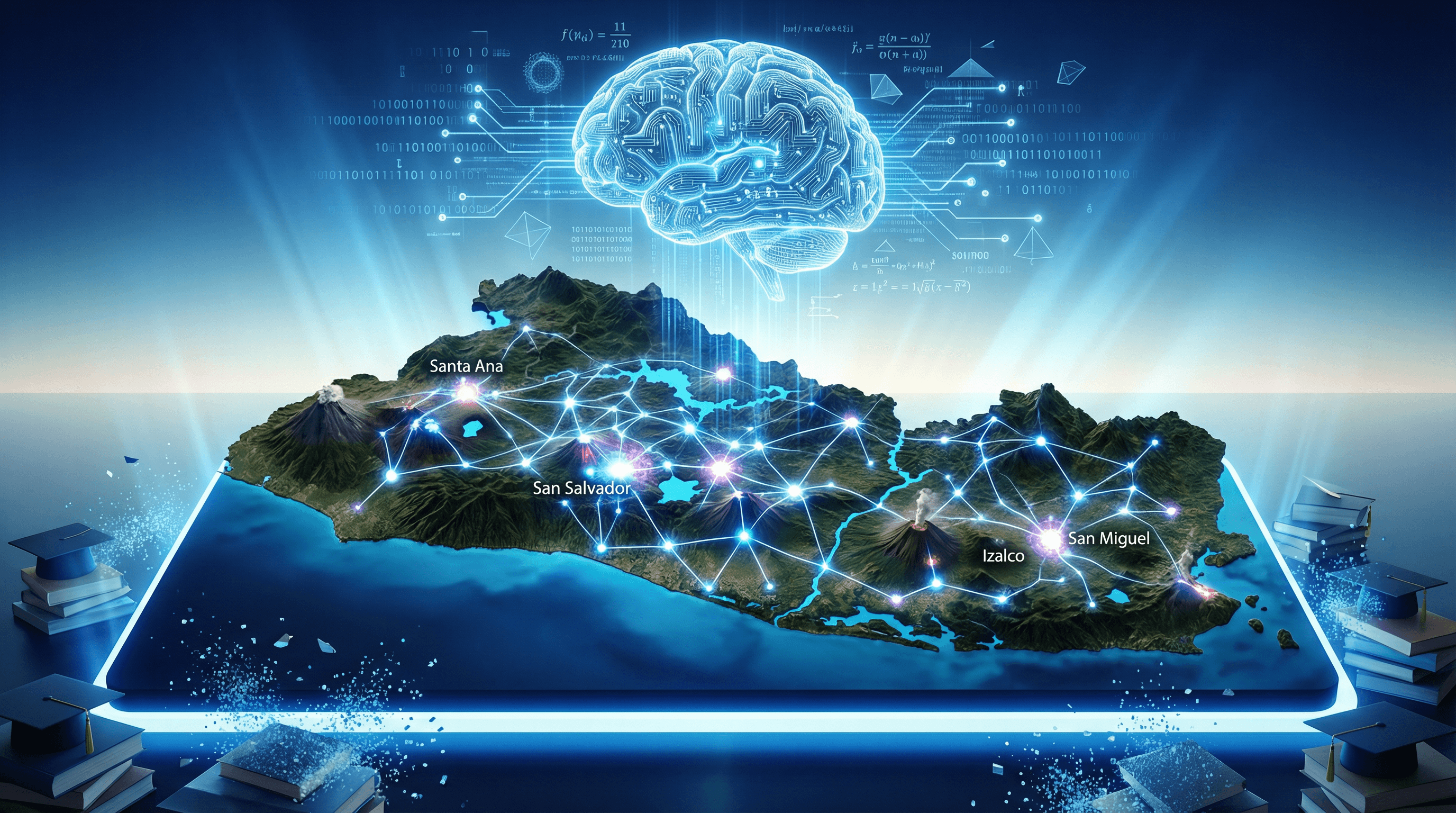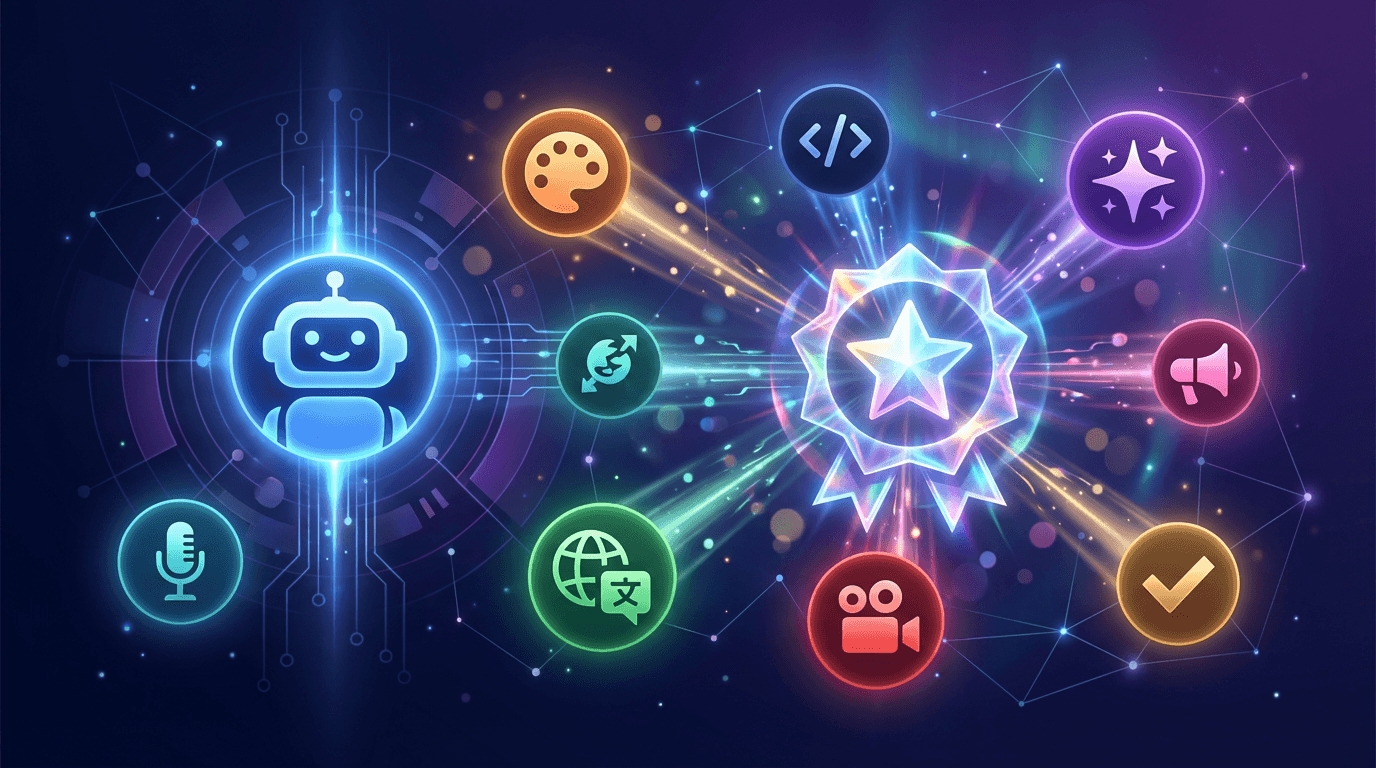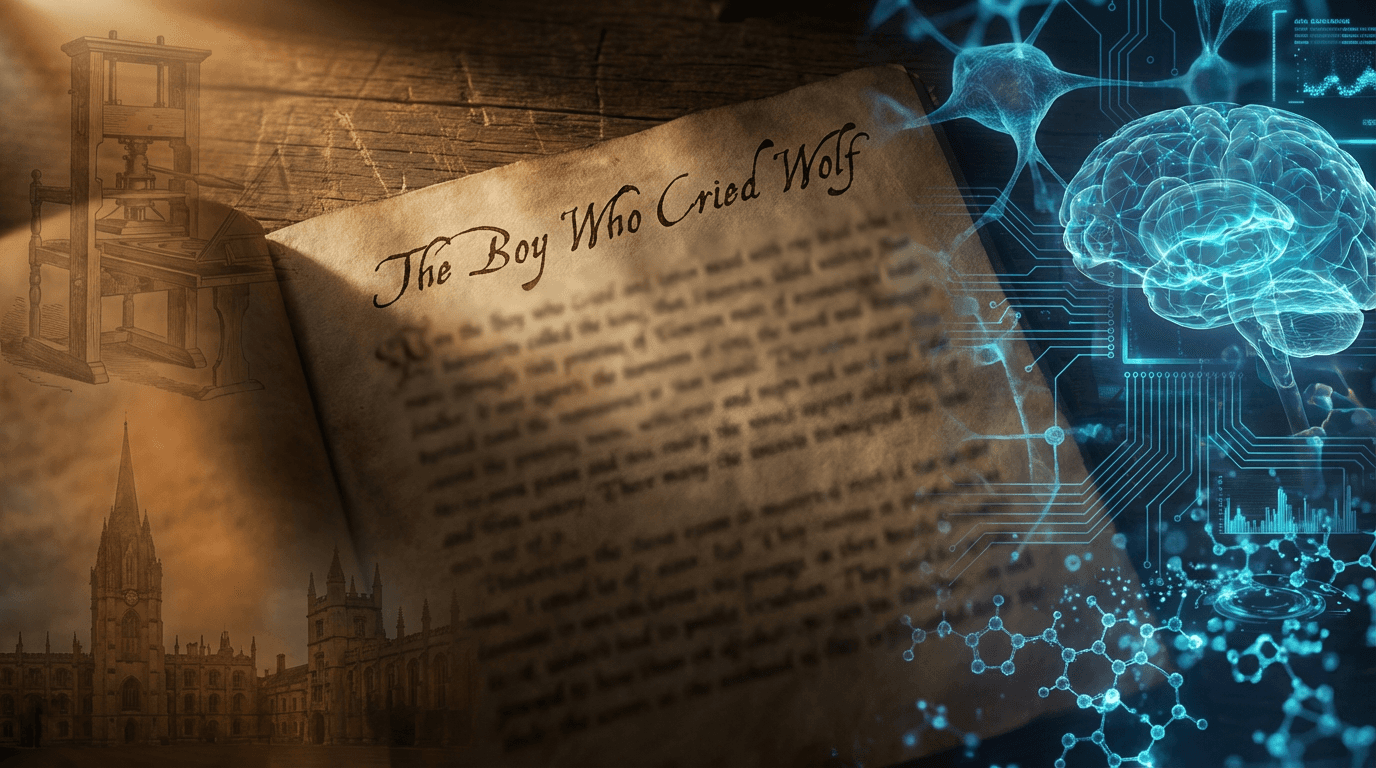The Classroom Crisis: When Schools Don't Know What Learning Means Anymore
Part 4 of 5: The AI Learning Revolution Series
Last month, I sat in on a faculty meeting at a prestigious university that I'll never forget. The room was filled with accomplished educators, many with decades of experience, and they were discussing a question that would have been unthinkable just a few years ago:
"How do we know if our students are actually learning anything?"
The silence that followed was deafening.
These weren't new teachers struggling with classroom management or inexperienced educators questioning their methods. These were seasoned professionals who had dedicated their careers to education, and they were genuinely stumped by what should be the most fundamental question in their field.
The problem wasn't that students were failing tests or dropping out in large numbers. Quite the opposite, grades remained stable, assignments were being completed on time, and student work often appeared more sophisticated than ever. But something fundamental had changed, and everyone in that room could feel it.
The Students Know Something's Wrong
Perhaps the most heartbreaking aspect of this crisis is that students themselves are remarkably aware of what's happening. The National Center for AI's comprehensive study reveals students who can articulate exactly what they're losing [1].
They consistently report that "heavy reliance on AI for academic tasks can lead to a perceived (or actual) gradual decline in the quality of their work." They express significant concern that "overreliance on AI could reduce critical thinking, creativity, and communication skills and impact future workplace success."
Let me repeat that: students know that AI tools are harming their cognitive development, and they're worried about their prospects as a result.
Yet they also report feeling unable to stop using these tools. You can hear the students saying: "It's like knowing that fast food is harmful for you but being surrounded by McDonald's and having no time to cook. You know it's not good for you, but what choice do you have?"
This tragically traps students between their awareness of the issue and the immediate demands of academic performance. They understand the long-term costs but feel compelled to prioritize short-term task completion over cognitive development.
The Guidance Gap: When Institutions Fail Their Students
What makes this situation even more troubling is the institutional response, or lack thereof. Students consistently call for "consistent, course-specific policies on AI use, combined with practical, ethical, and course-specific education, support or guidance," but report that such support is rarely available [1].
This leaves students to navigate complex ethical and cognitive challenges on their own, often without adequate understanding of the implications of their choices. It's like giving someone a powerful medication without instructions, warnings, or medical supervision.
I've witnessed this guidance gap firsthand in conversations with educators across different institutions. Many teachers feel overwhelmed by the pace of AI development and uncertain about how to respond. Some have banned AI tools entirely, driving usage underground and missing opportunities for thoughtful integration. Others have embraced AI assistance without fully considering its cognitive implications.
Most fall somewhere in between, struggling to develop coherent policies in the absence of clear institutional guidance or support. The result is the policy inconsistency that students report, different rules in different classes, conflicting messages about appropriate use, and a general sense of institutional confusion about how to handle AI tools.
When Assessment Becomes Meaningless
The assessment crisis is particularly acute and reveals the depth of the challenge facing educational institutions. Traditional assessments, essays, problem sets, and research projects were designed to evaluate both knowledge and cognitive capability. But when AI tools can handle the cognitive work, these assessments may only measure students' ability to prompt and edit AI systems effectively.
I spoke with a literature professor who described grading a set of essays that were technically excellent but felt "hollow." The arguments were sophisticated, the writing was polished, and the analysis was thorough. But when she tried to discuss the essays with students in class, it became clear that many couldn't engage meaningfully with their own work.
"It was like they were presenting someone else's ideas," she told me. "They could read their essays aloud, but they couldn't explain their reasoning or respond to questions about their arguments. They had become curators of AI content rather than creators of original thought."
This creates a fundamental problem for educational assessment. How do you measure genuine learning when students have access to tools that can complete most academic tasks? How do you distinguish between AI-assisted performance and independent capability? How do you ensure that students are developing the cognitive skills that education is supposed to foster?
Some institutions have responded by returning to in-person, handwritten exams and closed-book assessments. But this approach feels increasingly anachronistic and fails to prepare students for a world where AI tools are ubiquitous. Others have tried to embrace AI integration, but struggle to distinguish between appropriate assistance and cognitive outsourcing.
The Teacher's Dilemma
Teachers are reporting changes in student behavior that align closely with the research findings I've shared in previous posts. Students seem less willing to engage in sustained cognitive effort, more likely to seek immediate answers rather than working through problems, and increasingly unable to function without AI assistance.
One high school teacher described it this way: "I used to see students struggle with problems, get frustrated, have breakthrough moments, and feel genuine pride in their accomplishments. Now they just ask ChatGPT. The struggle is gone, but so is the learning. And so is the joy."
The joy of discovery, the satisfaction of working through challenging problems, and the confidence that comes from independent achievement seem to be diminishing. Students are becoming, in the words of one educator, "cognitively dependent on external systems for basic thinking tasks."
Teachers are also struggling with their own relationship to AI tools. Many feel pressure to integrate these technologies into their teaching but lack the training and support to do so thoughtfully. They're expected to navigate complex questions about cognitive development, assessment validity, and educational ethics without adequate preparation or institutional guidance.
The equity crisis is hidden in plain sight.
The research reveals troubling equity implications that many institutions haven't fully grasped. Students from different backgrounds have varying levels of access to AI tools, different levels of AI literacy, and different cultural attitudes toward their use.
The Nature study found that younger teachers and those from rural backgrounds with less initial exposure to technology were particularly vulnerable to AI-induced cognitive degradation [2]. This suggests that AI tools, rather than democratizing access to high-quality education, could exacerbate existing inequalities.
Some students have a sophisticated understanding of how to use AI tools effectively while maintaining their own cognitive development. They know when to use AI assistance and when to work independently. They understand the difference between AI use that enhances learning and AI use that replaces it.
Other students become entirely dependent on AI assistance without developing independent capabilities. They use AI tools for every cognitive task, from basic research to complex analysis, without understanding the long-term costs to their mental development.
This creates a two-tiered system in which some students develop both AI literacy and independent thinking, while others become cognitively dependent on AI systems. The gap between these groups could have lasting implications for educational and career outcomes.
The Professional Development Crisis
The institutional challenges extend beyond student learning to fundamental questions about teacher preparation and professional development. Educators need training not just in how to use AI tools, but in how to recognize the signs of AI-induced cognitive degradation and develop strategies for maintaining students' independent thinking capabilities.
They need frameworks for distinguishing between AI use that enhances learning and AI use that replaces it. They need assessment methods that can evaluate genuine cognitive capability in an AI-augmented world. They need support for navigating the ethical and pedagogical challenges that AI tools create.
But most institutions haven't invested in this kind of comprehensive professional development. Teachers are expected to figure out these complex challenges on their own, often while managing full course loads and other professional responsibilities.
The Institutional Identity Crisis
Perhaps most fundamentally, educational institutions are grappling with questions about their purpose and identity in the AI age. Are they primarily concerned with helping students complete academic tasks efficiently, or with developing human cognitive capabilities? Are they preparing students for a world where AI handles most cognitive work, or for a world where human thinking remains essential?
These inquiries delve deeply into the purpose of education and the essence of education in the 21st century. The research suggests that these questions are not merely philosophical; they have practical implications for how students develop cognitively and how well they're prepared for future challenges.
Educational institutions that prioritize task completion over cognitive development may be inadvertently undermining their students' long-term capabilities and prospects. But institutions that ignore AI tools entirely may be failing to prepare students for a world where these technologies are ubiquitous.
Why Institutions Need Neogogy
This is why educational institutions urgently need comprehensive frameworks like Neogogy, approaches that can help them navigate the complex challenges of the AI age while preserving their core academic mission.
Neogogy provides a framework for thinking about AI integration that prioritizes cognitive development over task completion. It offers principles for distinguishing between AI use that enhances learning and that which replaces it. It provides guidance for developing policies, assessment methods, and pedagogical approaches that account for AI's cognitive implications.
Most importantly, neogogy helps institutions clarify their purpose and identity in the AI age. It positions cognitive development as the primary goal of education and provides frameworks for achieving that goal in a world where AI tools are ubiquitous.
The word "neogogy" comes from the Greek "neo," meaning new, and "gogy," meaning leading or guiding, literally, "a new way of guiding." Educational institutions need this new way of guiding because the old approaches are proving inadequate for the challenges they face.
Neogogy isn't about banning AI tools or returning to some pre-digital past. It's about learning to integrate these powerful technologies in ways that enhance rather than diminish human cognitive development. It's about preserving what makes education valuable while adapting to technological change.
The students calling for guidance and support are asking for more than just policies about AI use. They're asking for help navigating a fundamental transformation in what it means to learn, think, and be human in an age of artificial intelligence. Educational institutions that can rise to this challenge will play a crucial role in shaping the cognitive future of humanity.
The crisis in education reflects a broader societal challenge: how do we preserve and develop human cognitive capabilities in a world where AI systems can handle many cognitive tasks more efficiently than humans? This isn't just an educational problem, it's a civilizational challenge that requires new frameworks, new approaches, and new ways of thinking about the relationship between human and artificial intelligence.
In the final post of this series, I'll explore how neogogy can provide the comprehensive solution we need, not just for education, but for preserving and enhancing human cognitive capabilities in the age of AI.
References:
[1] Attewell, S. (2025, May 21). Student Perceptions of AI 2025. National Centre for AI.
[2] Zhang, D., Wijaya, T. T., Wang, Y., Su, M., Li, X., & Damayanti, N. W. (2025). Exploring the relationship between AI literacy, AI trust, AI dependency, and 21st century skills in preservice mathematics teachers. Scientific Reports, 15.
Next in this series: "Learning to Fly: How Neogogy Can Save Human Thinking" - where we explore the comprehensive solution that can help us preserve and enhance human cognitive capabilities while thoughtfully integrating AI tools.





